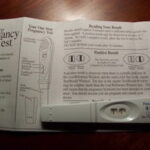A luteal phase defect can be a serious problem for any woman who is looking to get pregnant. A luteal phase defect can not only prevent a pregnancy from happening but can also cause early miscarriages for a woman. It’s an important for every woman to know what exactly their luteal phase is and what are the luteal phase defect symptoms and signs that they should be aware of.
What is the Luteal Phase?
The luteal phase is the part of a woman’s menstrual cycle that comes after she has ovulated, before the next cycle starts. The first day of the luteal phase would be the first day after ovulation as it doesn’t count the actual day of ovulation. An average luteal phase lasts anywhere from 11-15 days. When the phase is shorter than the 11 days, especially when it becomes less than 10 days, this is when problems with getting pregnant happen.
The reason why this phase of the menstrual cycle is so important is that it is when the fertilized embryo travels to the uterus and attempts to implant in the lining of the uterus. Once an egg has been released during ovulation, the follicle that once held the egg collapses and becomes the corpus luteum. The corpus luteum releases a hormone called progesterone, which allows the uterus to stay in the prime conditions for the egg to attach to the lining. When a person has low progesterone or they have a luteal phase defect, the lining of the uterus doesn’t allow the proper attachment for the egg and the lining may be shed too early for the egg to even attach. This is why a luteal phase defect can cause fertility problems as well as early miscarriages.
The Most Common Luteal Phase Defect Symptoms and Signs to be Aware of
The biggest luteal phase defect symptom that a woman needs to be aware of is a luteal phase that last 10 days or less. Although some women are able to get pregnant with a luteal phase of only 10 days it can cause some trouble. Anything less than 10 days makes it almost impossible for a viable pregnancy to happen.
You can keep track of your luteal phase by charting your menstrual cycles. When a woman ovulates she will see a body temperature shift that will be a clear sign of ovulation. By charting her temperature she can see exactly how long her luteal phase is, which would be the elevated temperatures after ovulation, not counting the day of ovulation or the first day of her next cycle. If there are less than 10 days in this phase of her cycle it is a sure sign that she has a luteal phase defect that needs to be addressed by a doctor.
If a woman doesn’t chart her cycles but has had more than 2 early miscarriages this may also be a sign of a luteal phase defect that needs to be researched more. The reason why women who have luteal phase defects often have early miscarriages is because the uterus is not in the prime condition for the egg to implant due to low progesterone or early shedding of the lining. If you have had more than 2 early miscarriages you may want to start charting your cycles to see how long your luteal phase is.
There is Help for Luteal Phase Defects
If you discover that you have short luteal phases there a few options that you have to help you conceive. There is natural progesterone creams that are available without a prescription that can help lengthen the cycle. Some doctors also recommend consuming 200 -600 milligrams of B6 to help lengthen the cycles as well.
Before you try any type of product or change your diet, it is suggested that you talk to a doctor first about your fertility problems. Just be aware that there are other options that you can try besides Clomid and HCG injections that may help your luteal phase defect.
Knowing whether or not you have any luteal phase defect symptoms can definitely help aid you in your journey of becoming pregnant. By knowing that it is this type of fertility problem that may be preventing you from getting pregnant you can get help and fix your problems so that you can increase your chances of getting pregnant much faster.
Source:
Taking Charge of Your Fertility (Revised Edition) by Toni Weschler, MPH 2002


